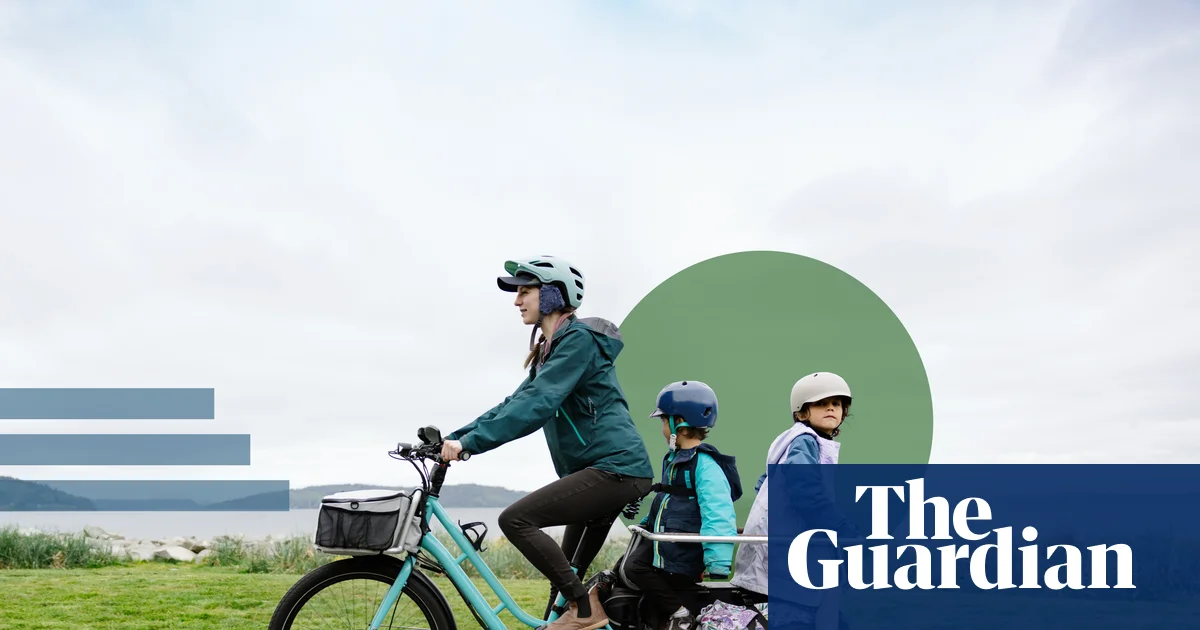On a trip to Vienna, we watched parents zip along the city’s bike paths on electric cargo bikes, loaded up with bags, groceries and kids who happily chatted to each other in the front box or back seat.
It inspired us to buy one of our own – but when it arrived, I felt daunted about its size and how we’d go navigating the streets of the Australian city where we live, especially during peak school times.
After my initial trepidation, I was surprised how quickly our car trips became bike rides. Like learning to drive, it took some time to learn how the bike steered, but it soon became our go-to ride for short trips. Forgoing a second car may have been the reason we bought it, but it was simply more fun to see my son grinning on the bike.
Can we make our streets safer so that more people are willing to give cargo ebikes a go? Can they make a difference in reducing transport emissions, and what should you consider if you’re thinking of getting one? I spoke to a few early adopters to find out.
Replacing short car trips
Driving less is a top reason people go for ebikes, whether to save money, cut emissions or exercise more. But throw kids into the mix, or hobbies, work and groceries, and things get more complicated.
E-cargo bikes, with storage or multiple seats at the front or back, are made for moving stuff and ideal for short trips between 2km and 6km, says Elliot Fishman of the Institute for Sensible Transport. In many central urban areas, e-bikes “will be the fastest single way that you can get from point A to point B” over those distances, he says.
Choosing to cycle rather than drive saves 300g CO2/km, which adds up to a substantial amount for a household if you’re cycling two or three times most days – especially when you consider how often people drive short distances, Fishman says.
Sydneysiders take about 4m car trips under 4km every day. In regional cities such as Orange, Grafton, Wollongong or Albury, the proportion of daily car trips under 6km is even higher than in capital cities, Fishman says.
With transport representing Australia’s fastest-growing source of carbon emissions, e-cargo bikes have a niche but important role to play.
Scout your route
If you’re not sure whether a cargo ebike is right for you, Fishman suggests looking at the type of trips you take each week and figuring out how many fall into that 2–6km range. Then, map out routes you could safely ride.
Look for smaller sidestreets, scout the route on a regular bike or jump on Google Street View, he says.
Jon Lindley, a cycling advocate in Wollongong and my former neighbour, suggests building confidence by starting with short trips on a weekend when there’s no time pressure and less traffic.
Check if places have somewhere you can park and lock up your bike – before you get there with a toddler in tow. You’ll also need somewhere secure to store the bike at home, where you can easily wheel it in and out.
Try before you buy
There are ebike rebates in some states, but they can be expensive, so you’ll want to find the right one for you. Front-loaders, long-tails, box bikes – each suits a different purpose.
Bikes that carry loads at the front are good for transporting young kids, Fishman says, because the rider can more easily see and talk to their little passengers. Older children are fine riding at the back.
Manufacturers such as Lug+Carrie offer low-cost leases, which Fishman says is a good way to test how a cargo ebike fits into your life. He says a lot of people end up buying or leasing a cargo ebike after the trial.
If those programs aren’t available to you, Fishman suggests asking a bike shop if you can test-ride a bike for at least half an hour to give it a spin up and down hills or turning at slow speeds.
Making streets safer
A fear of riding in traffic beside cars is “the number one reason why people don’t cycle”, says Fishman, who has used a cargo ebike to ferry his kids around Melbourne on carefully chosen routes since 2012.
Despite their longer-than-usual dimensions and wider turning circles, e-cargo bikes are quite easy to manoeuvre with pedal assist, he says.
Using modal filters (barriers that prevent the passage of certain vehicles) to create bike-friendly corridors is the cheapest, fastest and simplest way a city can make cycling safer, says Fishman. Placing modal filters on strategically chosen routes, such as Canning Street in Melbourne’s north, or through Redfern in Sydney, slows and reduces through traffic, and encourages people who don’t feel comfortable riding on busy roads to journey by bike.
Funnelling cyclists into select streets also concentrates riders along those routes, and research suggests increasing cyclist numbers improves rider safety.
Lindley says reducing speed limits to 30km/h is the fairest way to make streets safer for all road users.
Reducing speed limits dramatically lowers the chance and impact of crashes, especially fatalities, and counter to most drivers’ expectations, it hardly impacts car travel times and improves traffic flow.
Lindley has carted his three kids around on a cargo ebike for more than 10 years but says he has never stopped feeling vulnerable on a bike.
“That was the biggest psychological barrier for me,” Lindley says about riding with his kids. But his reasons for getting a cargo ebike were a strong motivator: it was cheaper, greener and, most importantly, it meant he could keep riding with his children and help them build healthy habits.
“You see the joy that the kids get out of it, the time you get to spend with them … [and] it encourages you to use it more.”

